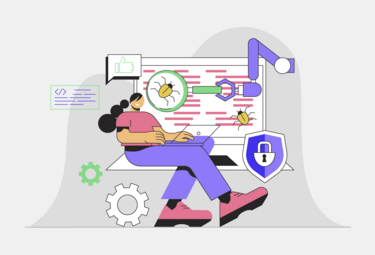Efficiency and competitiveness are among the fundamental factors determining market success. Digital transformation continues to progress and is also reflected in the area of optimising business process management. Consequently, modern companies are increasingly turning to automation of various mechanisms in order to increase overall efficiency and reduce operating costs.
Within the options available, there are two most popular approaches: Robotic Process Automation (RPA) and Business Process Management (BPM). Before implementation, it’s worth studying the differences, as well as the advantages and limitations of each, in detail.
Characteristics of the main automation methods
- Robotic Process Automation (RPA) is a technology that uses computer applications to automate repetitive tasks. They function in a way that mimics the actions of a human on a computer. This means that they can perform simple operations, such as copying data, filling in forms or operating programmes - exactly as if an employee were doing it.
- Business Process Management (BPM), on the other hand, is a concept that represents a much more strategic approach to automation, defining a style of business management. It involves the modelling, analysis, design and monitoring of entire business processes, not just individual tasks.
The differences between RPA and BPM therefore include the degree of automation, flexibility, cost, as well as the complexity of the processes. The choice between the two depends on the individual needs and objectives of the organisation.
| Robotic Process Automation (RPA) | Business Process Management (BPM) |
| Programming technology | Holistic approach to management |
| The main objective is to implement so-called 'robots' (automation programmes) and relieve humans of repetitive tasks | The main objective is to comprehensively streamline entire processes and eliminate potential bottlenecks |
| The implementation of this type of automation is relatively quick, in addition to the fact that the work of the programmes can be easily modified | Both implementation and modifications are costly and time-consuming |
| Does not require changes to existing systems and processes | Changes to the current business software are already required at an early stage |
Comparative table - RPA versus BPM
Instead, the common denominator of both types is the goal of improving productivity by reducing the time taken to perform tedious, repetitive tasks.
Comparison of RPA and BPM - advantages and disadvantages of each model
- Complexity of processes - RPA is best suited to simple, routine activities, while BPM is more suitable for complex, multi-step processes.
- Level of automation - RPA focuses on automating individual tasks, while BPM, on the other hand, improves the efficiency of entire business mechanisms.
- Integration with existing systems - BPM is more flexible and can be more easily integrated with different systems, whereas RPA works independently.
- Flexibility and scalability - RPA is characterised by greater scalability when there is a need to rapidly increase the number of so-called robots, i.e. automated activities. In BPM, making changes is generally more complicated.
- Implementation and maintenance costs - RPA is cheaper and quicker to implement. BPM usually requires a larger budget and the assumption of a longer time horizon.
|
Robotic Process Automation (RPA) |
Business Process Management (BPM) |
||
|---|---|---|---|
|
Advantages |
Disadvantages |
Advantages |
Disadvantages |
|
|
|
|
Better to 'robotise' or manage?
This question is very difficult to answer unequivocally. The choice between RPA and BPM depends on the specific needs and goals of your organisation. If your company performs a lot of routine and simple tasks, RPA is likely to be a better option. However, if your processes are more analytical and dynamic, BPM will then be of greater benefit.
It is worth remembering that the two approaches are not mutually exclusive. In some cases, integrating RPA with BPM can be the best solution, allowing the effective management of both simple and complex business activities. Sometimes, RPA is even classified as one of the instruments belonging to BPMS, or Business Process Management Systems (BPM is the concept and BPMS is the tool).
Examples of use include:- recognition and posting of incoming invoices (financial sector),
- speeding up credit decision-making processes (banking sector),
- calculation of material requirements (logistics and warehousing sector),
- clearing of production orders (manufacturing sector).
In addition to this, basic tasks such as back-up, payroll generation, sending mailings or notifications and much more cannot be overlooked.
In summary, whatever model is adopted, relying on this type of solution significantly streamlines work, reduces costs and increases productivity. The automation of business activities is therefore the key to achieving high efficiency and market competitiveness. RPA and BPM are two different approaches to the general issue of BPA (Business Process Automation), which work well in slightly different applications. The choice between the two depends on the nature of the processes present in a particular organisation. Careful consideration must be given to which model will best meet business objectives and provide the company with optimal results.





